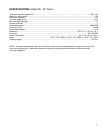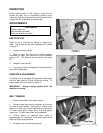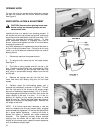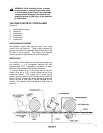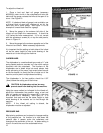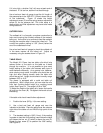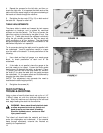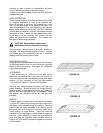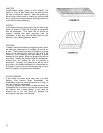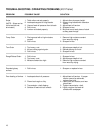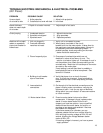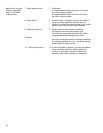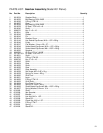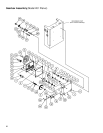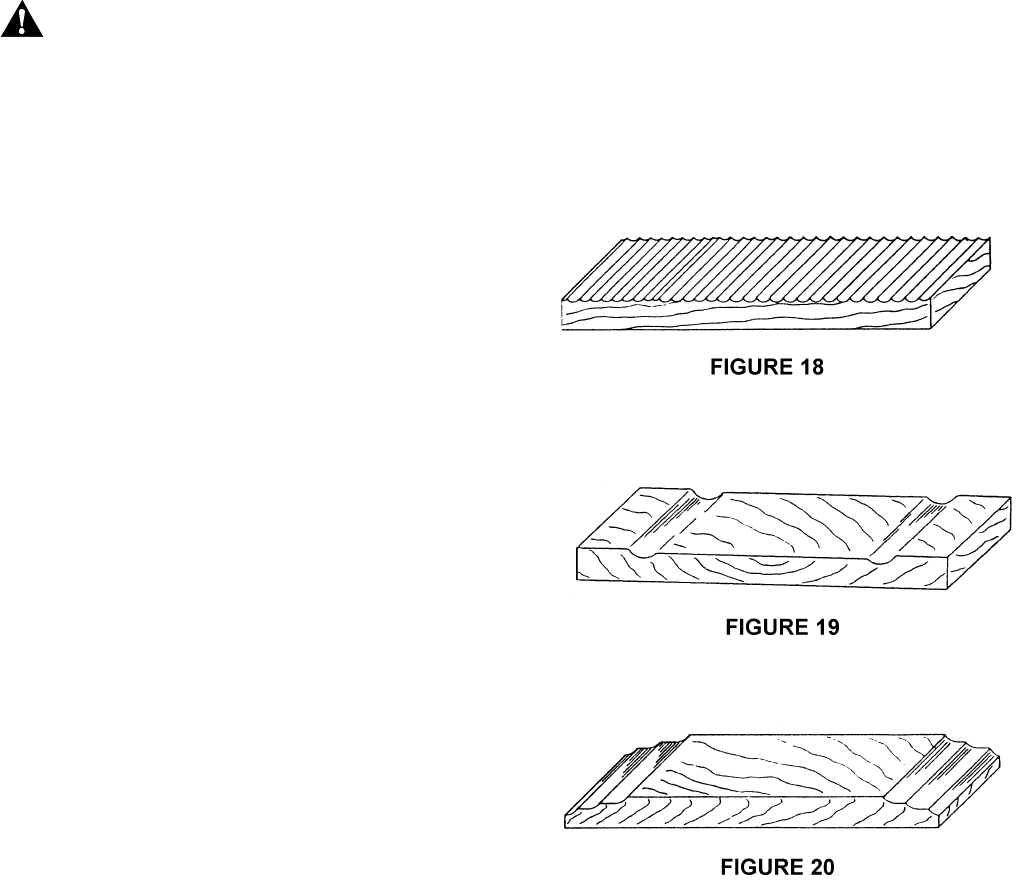
15
Learning to read a board for imperfections will save
hours in adjusting a planer to operate properly.
Following are some problems that may arise and their
probable solutions:
FEED RESTRICTION:
This is caused either by the table rolls being set too low
for roughing operations or from a low pressure bar.
About 90 percent of the time, the pressure bar is too
low. As the sharp edge of the planer knives wear, you
must compensate for this wear by raising the pressure
bar an equal amount on each side. Your first indication
of knife wear is hesitation in feed of the material through
the machine after it leaves the corrugated infeed roller
on its way out of the machine. Turn machine off and
adjust the pressure bar acordingly. The material will
free up and feed through smoothly.
CAUTION: Never attempt pressure bar
adjustment while the machine is running.
Feed restriction can also occur due to pitch buildup on
the table. Be sure the table surface is clean. Dusting
the surface with talc occasionally will aid in smoother
feeding and help prevent pitch buildup.
WASHBOARD FINISH:
A very pronounced washboard finish down the full length
of the board results from one knife being too high and
forced to do all the cutting. See Figure 18. Reset the
high knife accordingly.
CLIP MARKS:
If "clip" marks occur 6" (152 mm) in from each end of
the board, the pressure bar is too high. See Figure 19.
Turn both right and left hand adjusting screws the same
amount, 1/4" turn clockwise or less, and take another
1/16" (1.58 mm) deep cut. Re-examine the board.
Continue the operate-adjust procedure until the clip
marks disappear. Should the board fail to feed through,
back off slightly on both adjusting screws until feeding is
smooth and the imperfections do not reappear. Lock
the pressure bar adjusting screws with the jam nuts
provided.
SNIPES:
If snipes appear on each end of the material, as shown
in Figure 20, a table roll is too high causing a slight lift of
the material as it passes through the machine. Normally
these snipes are more noticeable on the trailing end of
the board than on the lead end, and most often occur
during planing of rough lumber. Table rolls must be
elevated for running rough or resaw lumber through the
machine. When material is turned over to surface the
other side, and you neglect to lower the table rolls for a
finished cut, then definite snipes will appear on the ends
of the material.



